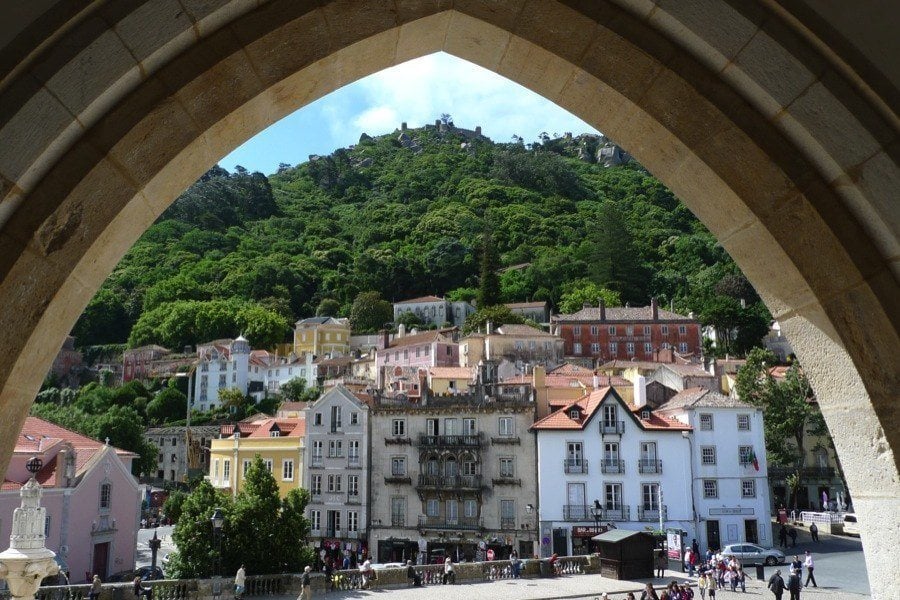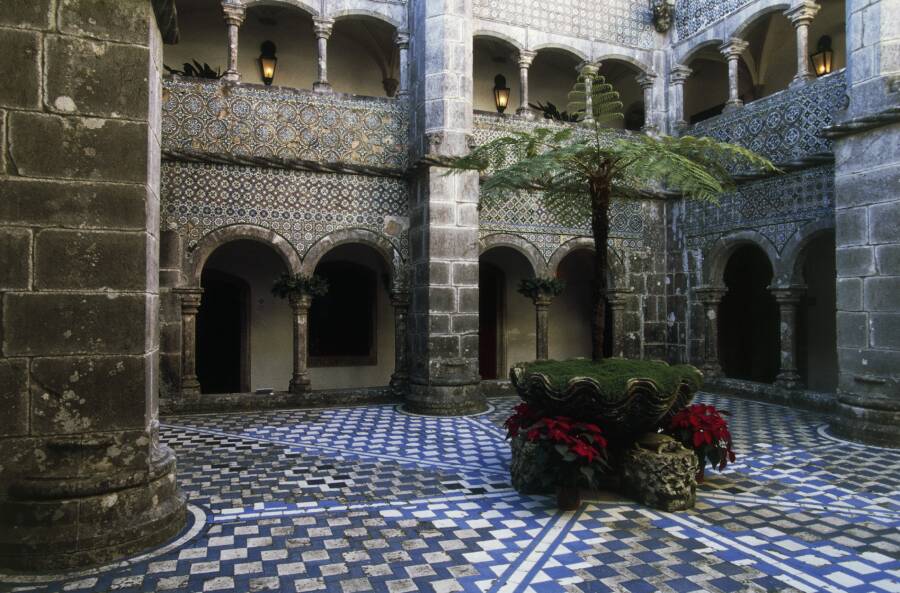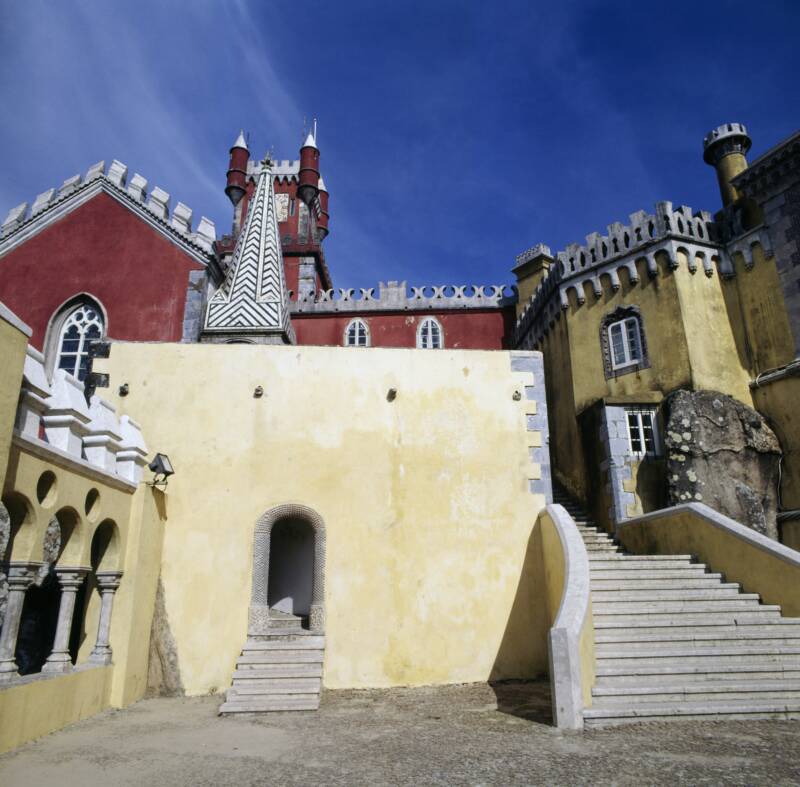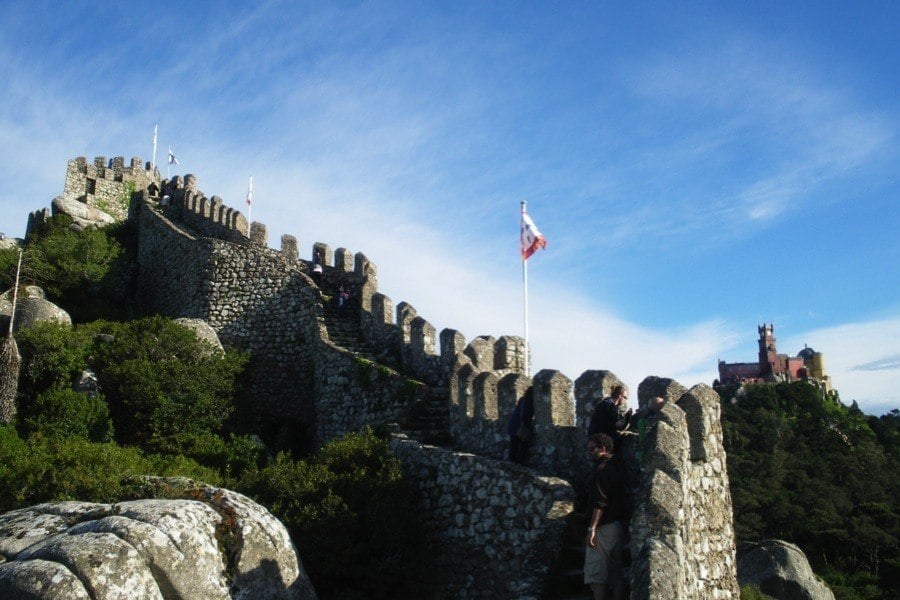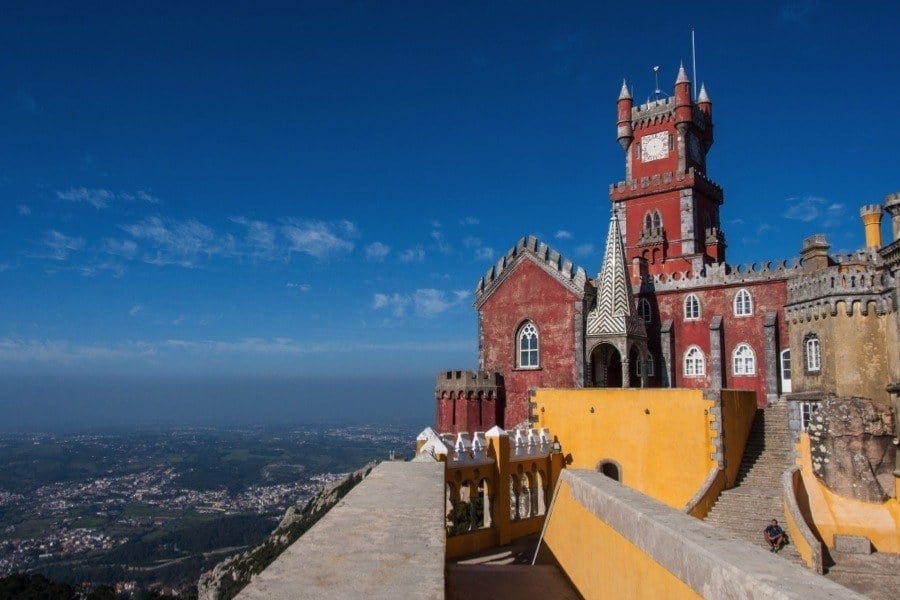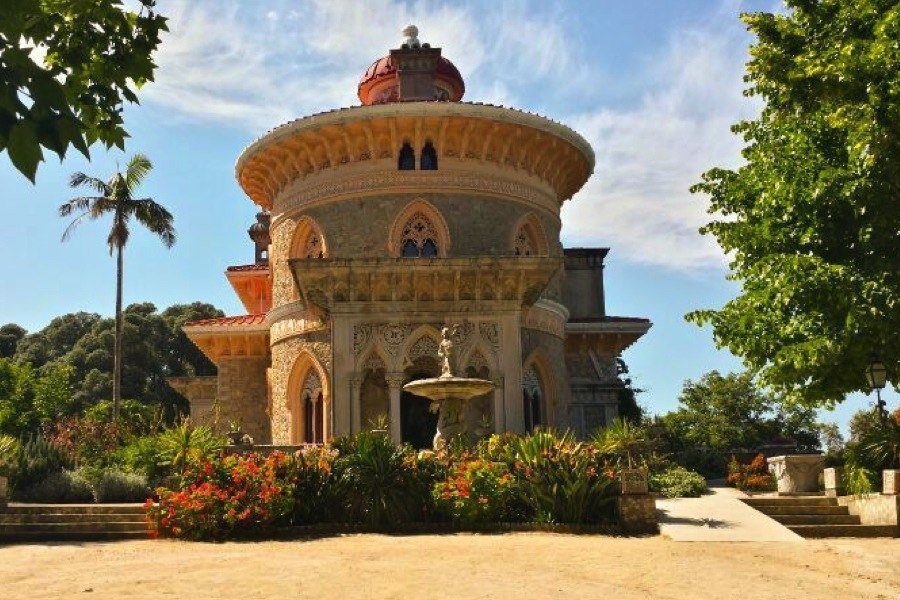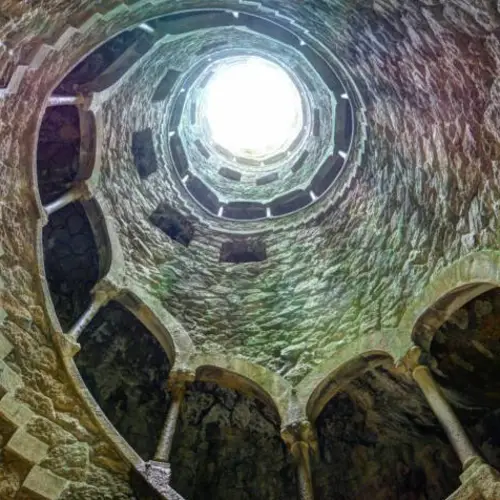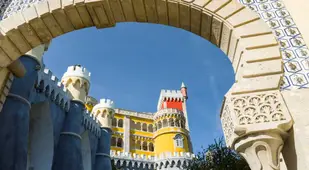From Pena Palace to the Moorish Castle, it's easy to see why Sintra, Portugal ranks with the most wondrous historic cities on Earth.
Sintra, Portugal is a three-dimensional anthology of architectural pleasure. Considered a royal sanctuary, its lush terrain is peppered with pastel palaces and intricate stone carvings. It's no wonder why UNESCO declared it a World Heritage site in 1995.
The attractions in Sintra are abundant. They include the historical municipal building completed in 1154, and the mysterious Quinta da Regaleira that boasts an enigmatic past involving secret societies.
Anywhere else, architectural specimens like these would be showstoppers. But in Sintra — a half-hour drive from the capital city of Lisbon — they are just the opening acts. Arguably, the three most impressive sites are the Pena National Palace, the Moorish Castle, and the Monserrate Estate.
Sintra, Portugal: The Palace Of Pena
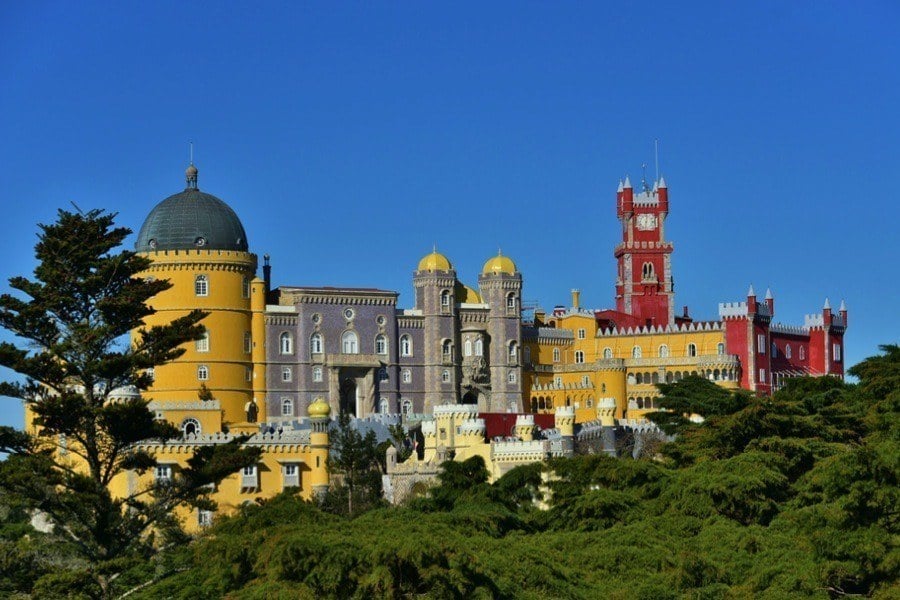
glynlowe/FlickrThe Pena National Palace rises out of the forested hills just outside of Sintra.
This spectacular building rises from the foggy hills just beyond Sintra city limits. It almost looks like it's pieced together from several different castles because of all the different colors and styles. As was tradition, builders began construction on the palace after an apparition of the Virgin Mary reportedly appeared on site.
A pilgrimage site since the Middle Ages, King Manuel I ordered for the space to become a monastery in the early 1500s. For years, Pena Palace was just a quiet place for meditation. It housed a maximum of 18 monks at a time.
But the site received a colorful makeover in the mid-1800s. King Ferdinand II and Queen Maria II decided to transform it into a lovely summer retreat. They acquired the monastery, the surrounding lands, and also the Castle of the Moors that was nearby.
The result of this renovation was a unique architectural mash-up of Islamic, Gothic, and neo-Renaissance styles. Domes, parapets, and vaulted arches were arranged in dazzling juxtaposition. Ferdinand apparently wanted it to look like an opera.
It consists of foundations, enveloping walls, and gateways, plus the restored convent, cloister, and clock tower. The interiors are decorated in the cathédrale style, and are no less opulent than the other parts of the castle.
The royal family fled during the Revolution of 1910, and so the palace and grounds fell into disrepair. However, the state restored the site later in the 20th century. It is still used for occasional high-level government meetings, but the most frequent visitors are tourists.
The Moorish Castle And Fortress Walls
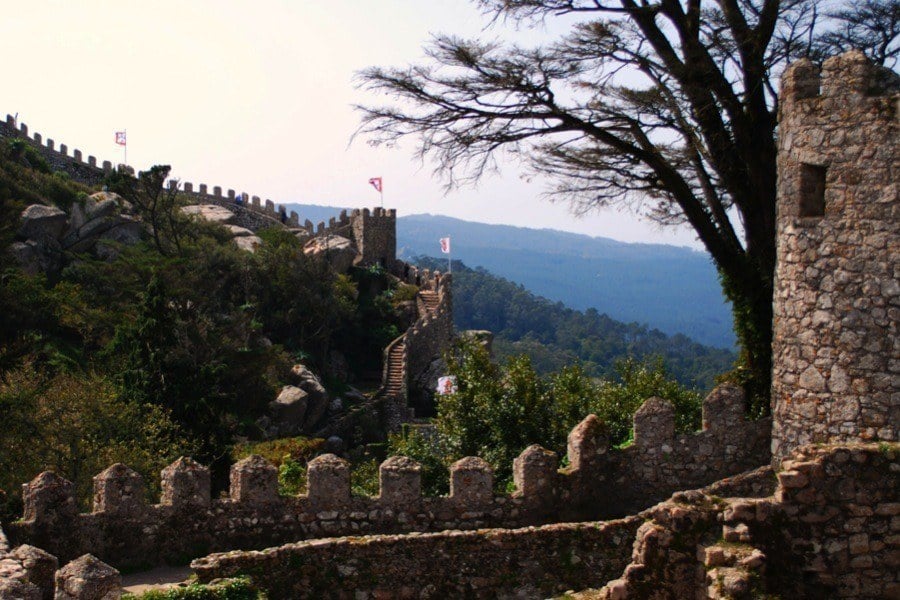
Pentarux/Flickr The 1,300-year-old fortified walls of Sintra's Islamic Castle.
The Islamic Castle is a medieval fortress often called the Moorish Castle, because the Moors built it in the 8th and 9th centuries. (Much of Portugal lived under Islamic rule for over 500 years from the early 8th century.) This incredible fortress is possibly on the site of an older stronghold built by the Visigoths.
During the latter half of the 12th century, the limestone and masonry chapel inside the castle became the parish seat. However, a huge earthquake hit Lisbon in 1755, causing considerable damage. This greatly affected the stability of the castle.
Ferdinand II began conserving the condition of the castle in 1840. He consolidated the walls, created nooks, and stabilized the chapel.
The impressive fortress walls still wind up and down the hillsides. On less foggy days, it offers spectacular views of the surrounding country. At certain angles, the walls almost resemble those of the Great Wall of China.
The Monserrate Estate
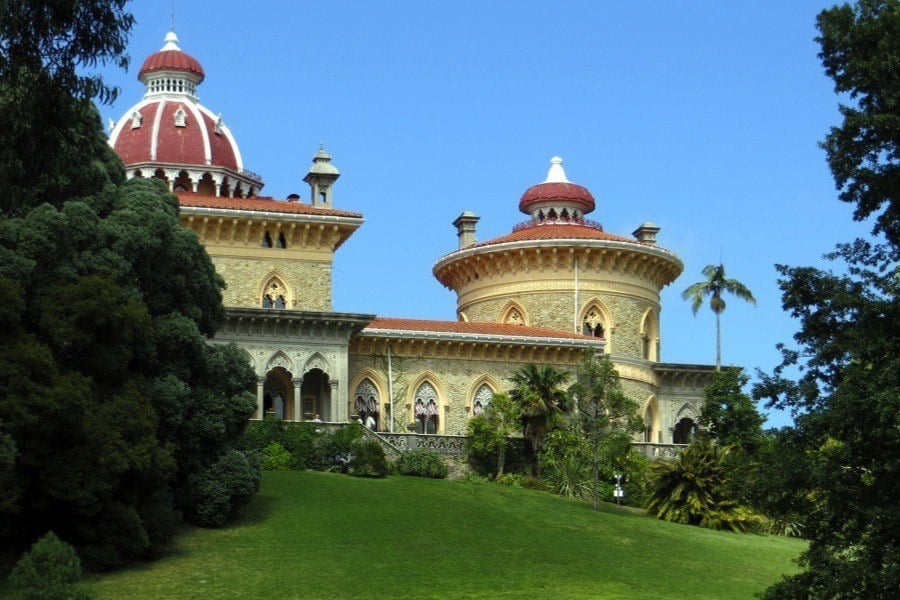
Wikimedia Commons The exquisite Monserrate Estate forms part of the UNESCO-recognized "Sintra Cultural Landscape."
According to legend, a chapel dedicated to the Virgin Mary sat on this very spot in 1093. On these ruins, Friar Gaspar Preto built another chapel in 1540 — and dedicated it to Our Lady of Monserrate.
After its construction, a hospital and a governor owned it. However, the previously mentioned 1755 Lisbon earthquake rendered the farmhouse uninhabitable.
Lord Byron visited the property in 1809, and the trip later inspired his poem "Childe Harold's Pilgrimage." One can retrace his steps through Sintra, Portugal through his descriptive writing.
Francis Cook, an early admirer and English merchant, rented the Monserrate Estate in 1856. (Afterward, he garnered the title Viscount of Monserrate.) Cook bought the property seven years later and began work with architect James Knowles on the remains of the house. After Knowles completed the work, the Cook family used the finished palace as their summer residence.
It's little wonder why. With its remodeled structure, it looked like a place of paradise.
Aside from the structure, this incredible building also boasts amazing botanical gardens. Over 3,000 exotic species of plants collected from all over the world find a home in the gardens of Monserrate. Furthermore, the landscaped gardens are surrounded by an oak forest.
Both home and garden have been repaired over the years and are a delight to the public — among the other fantastic marvels that dot the landscape.
As a modern tourist of the city remarks: "Every square inch is covered in art. It's truly elegant."
For more remarkable European destinations, check out our posts on the Roman ruins outside of Italy and the top natural wonders of Europe.
